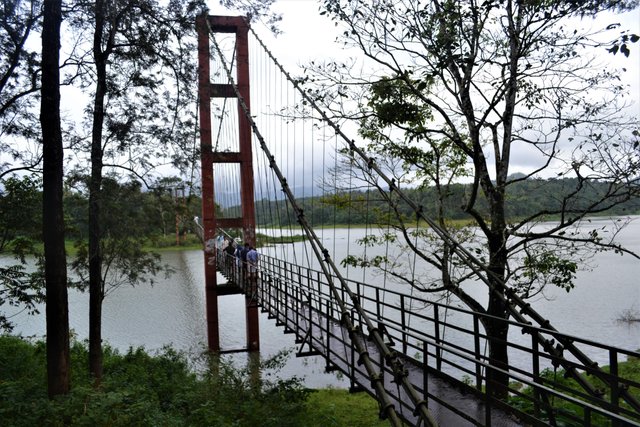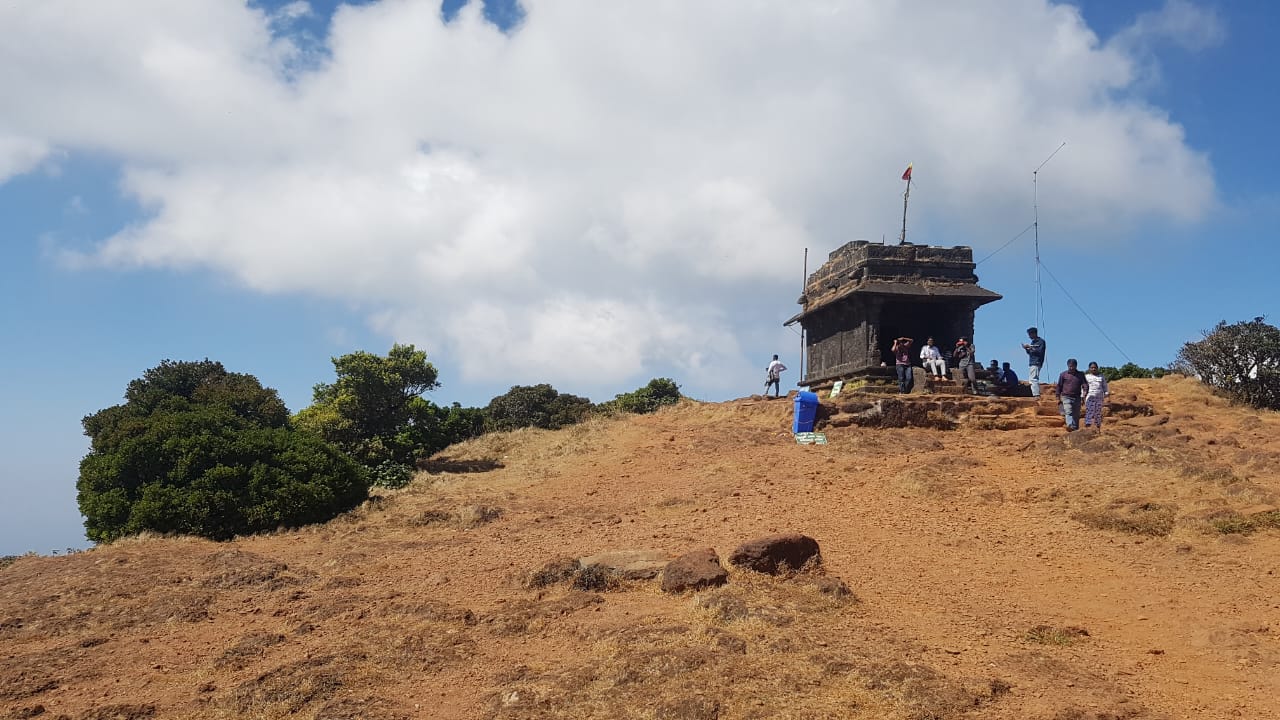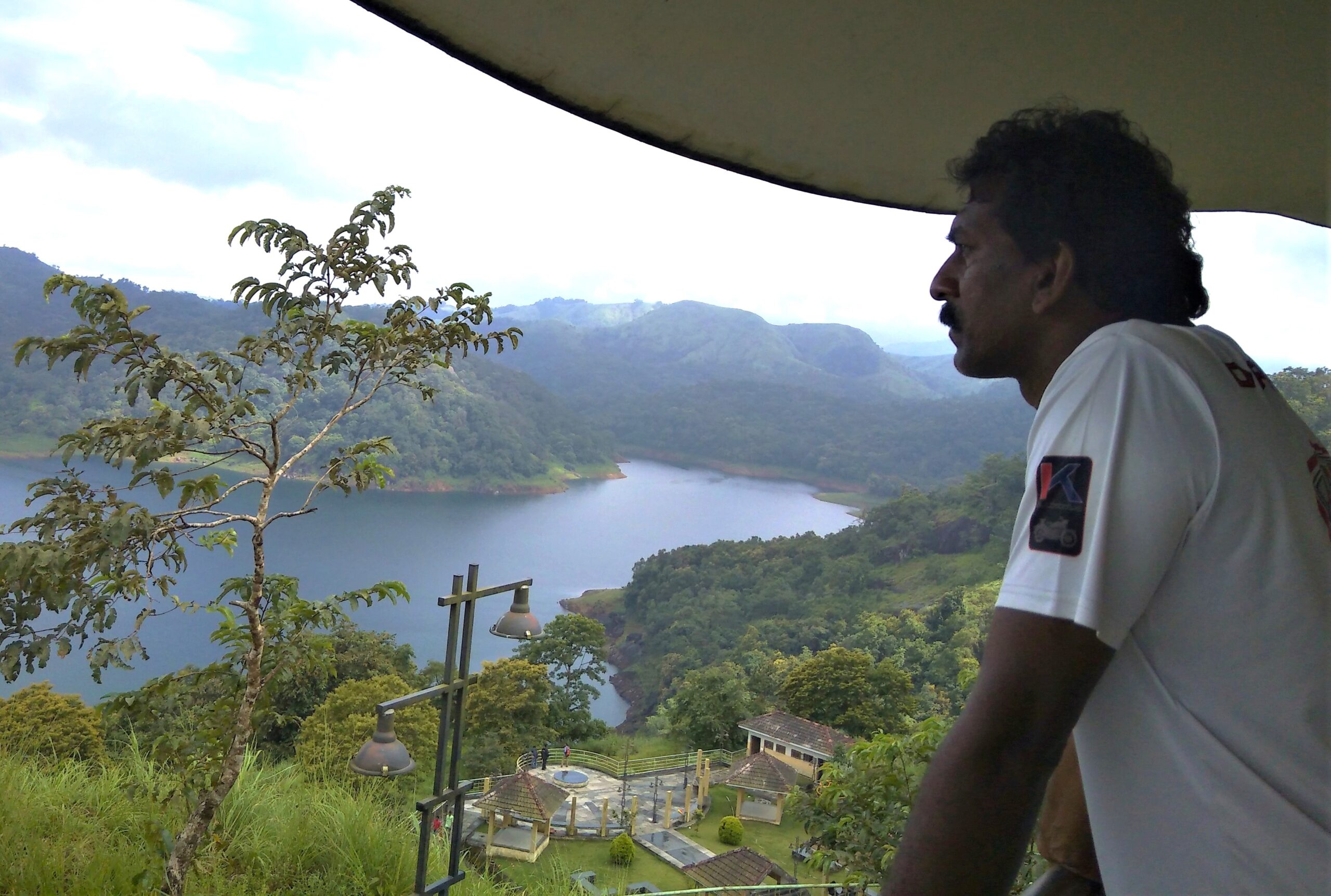A Hidden Gem in the Heart of Idukki - The Hanging Bridge
Bridges are common, but hanging bridge are not. Imagine a place not far from a state highway connecting the towns of Kuttikkanam and Kattappana in the Idukki district of Kerala — a place that becomes inaccessible during heavy monsoon rains. A village with a history as ancient as 1,500 years, home to a temple believed to have been built by Lord Rama, a modern hanging bridge, and a serene river named Periyar that flows into the forests connected to Asia’s biggest arch dam.
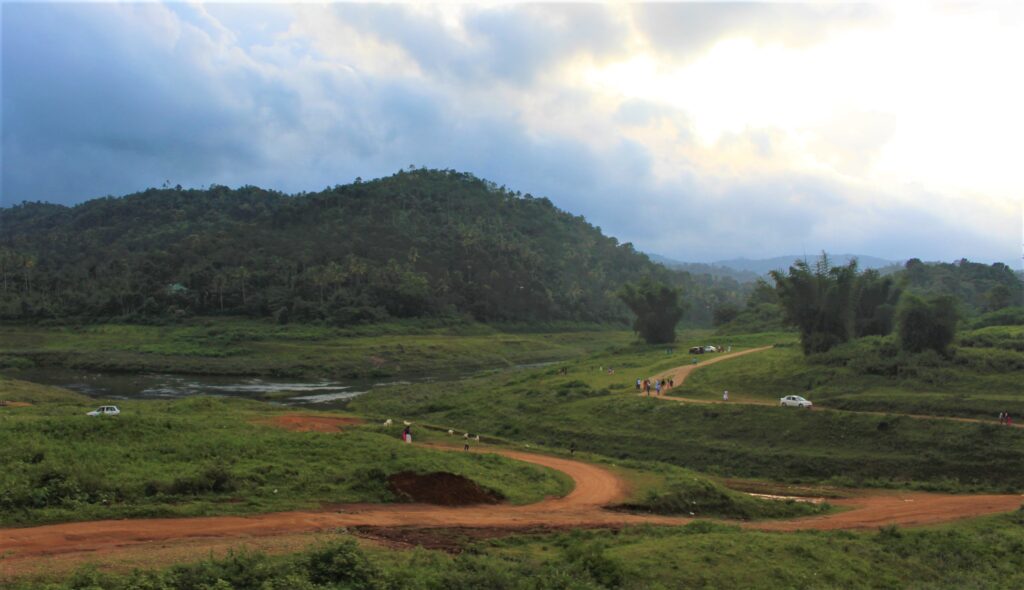
All these elements together make this place one of the most fascinating and underrated destinations for travel enthusiasts.
The Scenic Route to Ayyappankoil
This small village, Ayyappankoil, lies within Kattappana town in Idukki district — a region that shares its border with Tamil Nadu. Idukki is renowned for housing Asia’s biggest Arch Dam, and nearly 60% of its land is covered with forests and mountains. For anyone coming from the concrete jungles of the city, the sight of these hills, forests, and rivers is a refreshing change — nature at its purest form.
As we stepped out of the car just a couple of kilometers off the main road, it immediately felt like stepping into a picture-perfect Indian village. The atmosphere was calm and unspoiled — like walking into an old portrait still alive on the walls of memory.
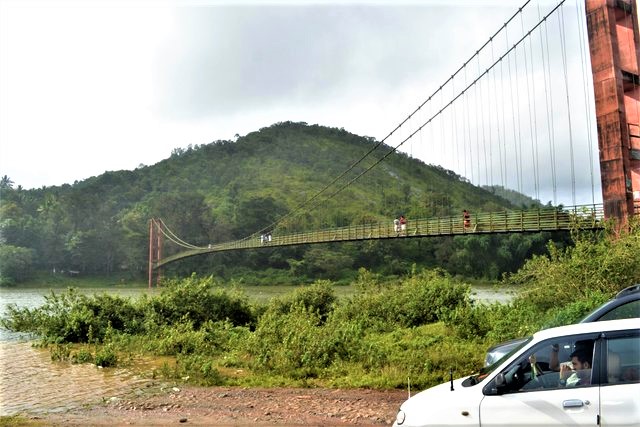
A small footbridge crossed over a stream that widened into a lake. A traditional boat drifted lazily on its surface. Untied cows grazed on lush green grass, women washed clothes along the banks, and gravel paths showed marks of daily village life. Amidst all this, a long hanging bridge appeared, suspended gracefully in the air — and I couldn’t help but wonder why this place doesn’t feature among Kerala’s best travel destinations.
Kerala’s Longest Suspension Bridge (Hanging bridge)
The hanging bridge at Ayyappankoil is truly the star attraction here. It is the longest suspension bridge in Kerala, stretching nearly 200 meters, connecting the Ayyappankoil and Kanchiyar panchayats. Commissioned in 2013, the bridge stands as both a necessity and a marvel.
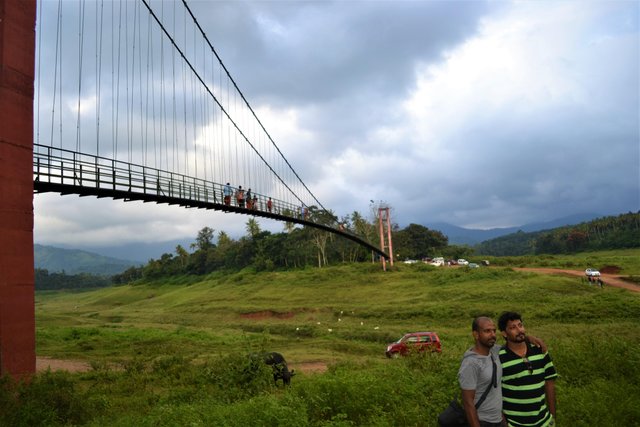
During monsoon, when the rains are heavy and continuous, the entire area gets submerged by the surplus water from the Idukki Dam. Since this area lies within the catchment zone under the control of the State Electricity Board and the Forest Department, the hanging bridge becomes the only lifeline connecting both sides.
My visit was during the summer season, so I couldn’t witness the flooding myself. But later, while showing photos of my trip to colleagues in Delhi, I came across images of the bridge during monsoon — and I was spellbound. The sight of the bridge floating above the floodwaters, surrounded by green hills and mist, was mesmerizing. I promised myself to return during the rainy season just to witness that magical view.
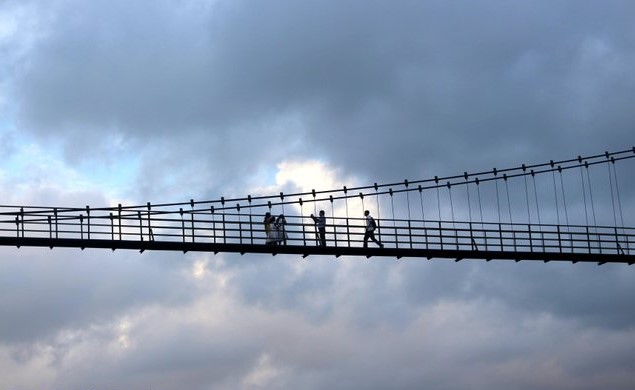
Walking across the bridge was an adventure in itself. It slightly oscillated midway — or maybe it just felt that way! Children and adults alike were thrilled to walk across, some taking selfies, others just soaking in the experience. The view from the bridge was breathtaking — stretches of greenery and mountains as far as the eyes could see, with nothing obstructing the horizon.
A King Still Rules Here
One fascinating piece of local information truly caught my attention — a tribal community of around 3,000 families still follows their traditional system of governance, headed by a King, supported by ministers and councils. Remarkably, the present King is a college graduate, a symbol of how education in Kerala has reached even the remotest forest regions.
It felt like stepping into another era, where tradition and modernity coexist in perfect harmony.
The Ancient Ayyappa Temple
Just a short walk or drive from the bridge stands the ancient Ayyappankoil Temple, believed to have been built by Lord Rama around 1,500 years ago. The temple is unique in that it is designed to survive floods — the sanctum stands at a higher level, ensuring that even when the surrounding area is submerged, the shrine remains above water.

Daily poojas are performed without fail, even during monsoon. When the area floods, devotees reach the temple using traditional snake boats, making the darshan experience truly divine. It is said that the temple’s continuity of worship, despite all odds, is what keeps the spirit of this village alive.
Behind the temple flows the Periyar River, calm and narrow during the summer, with small homes scattered across its banks. The setting feels untouched by time — peaceful, serene, and deeply rooted in nature’s rhythm.
Boat Ride into the Hidden Forests
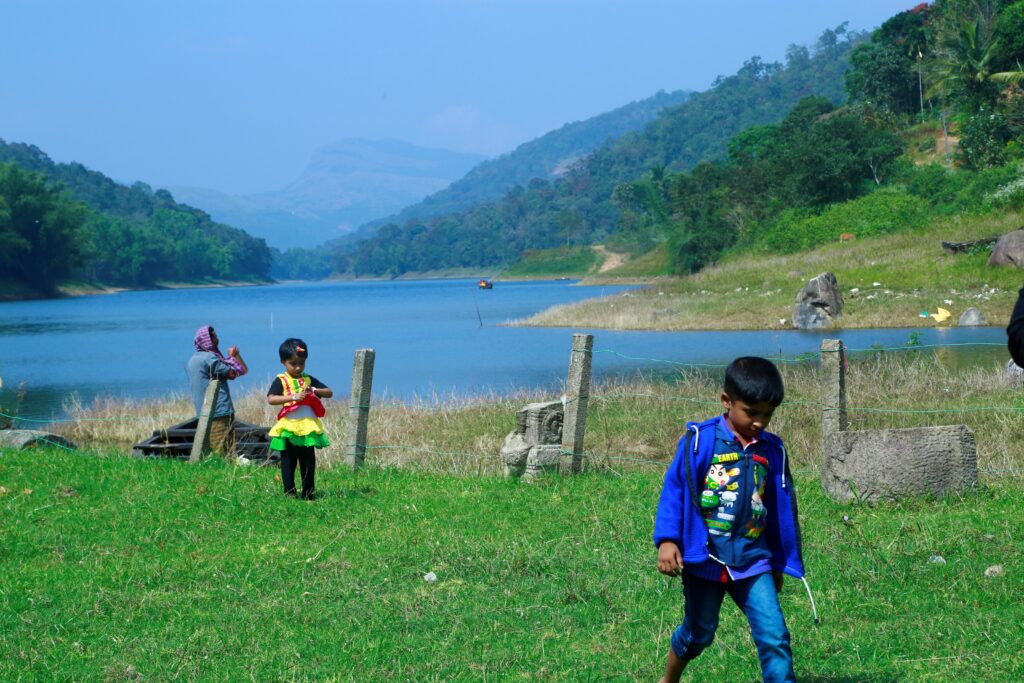
By the riverbank stood a local boatman, hopeful for a few visitors. For a small fee, he offered rides into the hidden stretches of the forest, providing life jackets for safety. Unfortunately, time wasn’t on our side that day, but we took his contact number — promising to return during the rains for a longer, more immersive experience.
A Hanging Bridge Between Two Worlds
As I walked back, I looked once more at the hanging bridge glimmering in the evening light. Villagers were crossing it — some with baskets, some chatting, children running with laughter. For them, it’s not just a tourist spot — it’s a lifeline. When the floods come, it’s the only connection to the other side.
For a traveler like me, it was a moment of reflection — how nature, faith, and necessity all meet here in quiet harmony. Ayyappankoil is not just a destination; it’s a living painting — one that changes with every season, every drop of rain, and every footstep across that floating bridge.
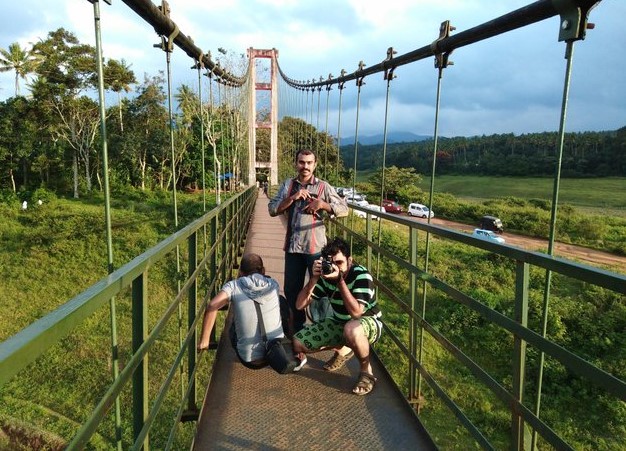
Travel Information
- Location: Ayyappankoil village, near Kattappana, Idukki district, Kerala
- Distance: About 7 km from Kattappana town, around 30 km from Thekkady
- Attractions: Hanging bridge, Ayyappankoil Temple, Periyar river boating
- Best time to visit: June to September (for monsoon beauty), or November to February (pleasant weather)
Click here to see the photo story
Wikipedia page for this place: Click here
If you loved this post please leave a reply here

